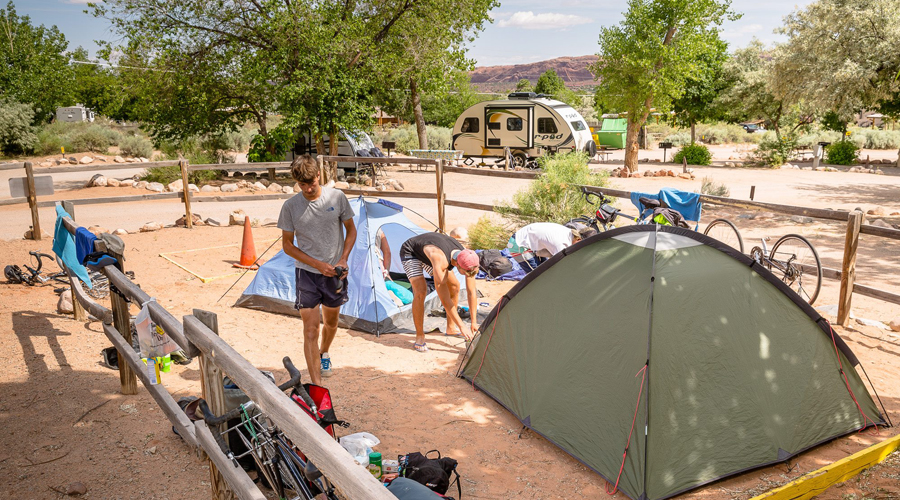More than 6 million new North American households have adopted the camping lifestyle since 2014, with the number of campers who camp three times or more each year–the most avid group of campers–having increased by 64 percent.
This growth, according to the results of the 2018 North American Camping Report, an annual independent study supported by Kampgrounds of America Inc., is an indicator that camping is fast becoming a lifestyle attribute among U.S. and Canadian households–and there is no indication this trend is slowing down.
In the U.S. there was an increase of 2.6 million new camper households in 2017. Further, representation among all ethnicities is beginning to appear more like the overall population. Building on 2017 report findings, campers at all experience levels and among all ethnicities continue to express the desire to camp more and are equally likely to say they intend to increase their camping trips in 2018: 45 percent of all campers indicated they will increase camping trips in 2018, an increase of 3 percent from last year’s report, while 39 percent of new campers in 2017 will increase camping trips in 2018.
Increases in camping–both in reach and frequency–can be tied to increased accessibility of camping due to the removal of previously-held beliefs and barriers. While previous research demonstrated bugs, safety/security and/or campers not knowing anyone who camped as primary barriers to camping, those barriers are waning with technology and social media serving as access portals to helpful information both prior to and during the camping experience. Further, according to campers who say access to cell or Wi-Fi service has a great deal of impact on the length of their trips, they are able to take almost a full week extra of time camping.
“Camping is a highly social activity, and with that, we are seeing campers turning to their social circles or other camping influencers for information and resources, including borrowing or renting RVs and gear. It’s this social nature–both on and off the campground–that continues to reduce barriers and fuel the growth of annual camping in North America,” said Toby O’Rourke, president of KOA. “With reduced barriers and the desire of campers to connect with nature and each other, it is no surprise that camping is fast becoming a fundamental component of an outdoor lifestyle.”
Key findings and trends based on the results of the 2018 North American Camping Report include:
- Overall camping incidence remains stable, with 61 percent of U.S. households (77 million) having someone who camps at least occasionally, a minor increase over last year.
- Forty-five percent of all campers indicated they will increase camping trips in 2018, while 39 percent of new campers in 2017 will increase camping trips in 2018.
- As first noted last year, teen campers continue to be highly engaged in camping and demonstrate a great deal of enthusiasm toward camping and the outdoors.
- Teen campers express higher levels of enthusiasm toward camping than what adults predict; 94 percent of teens state they are enthusiastic about camping, compared to 77 percent of adults who say that teens are enthusiastic.
- Nearly all of the teen campers surveyed claim they intend to camp as adults, and if they have children, they intend to bring them camping.
- In fact, most teen campers identify a benefit of camping as relaxing the adults in their lives (as well as themselves).
Look for more on the latest camping trends in an upcoming issue of SGB Executive.
Photo courtesy KOA















